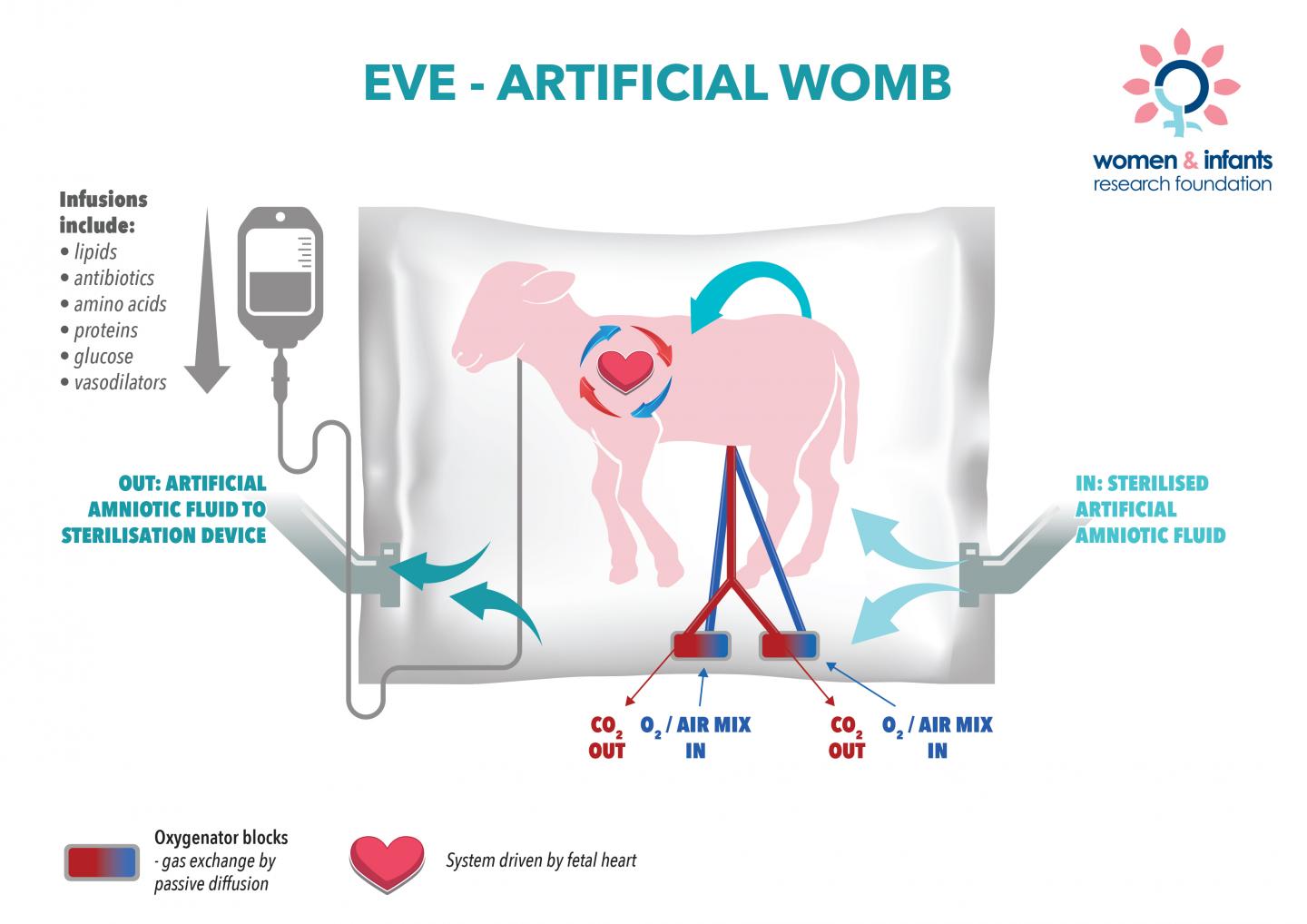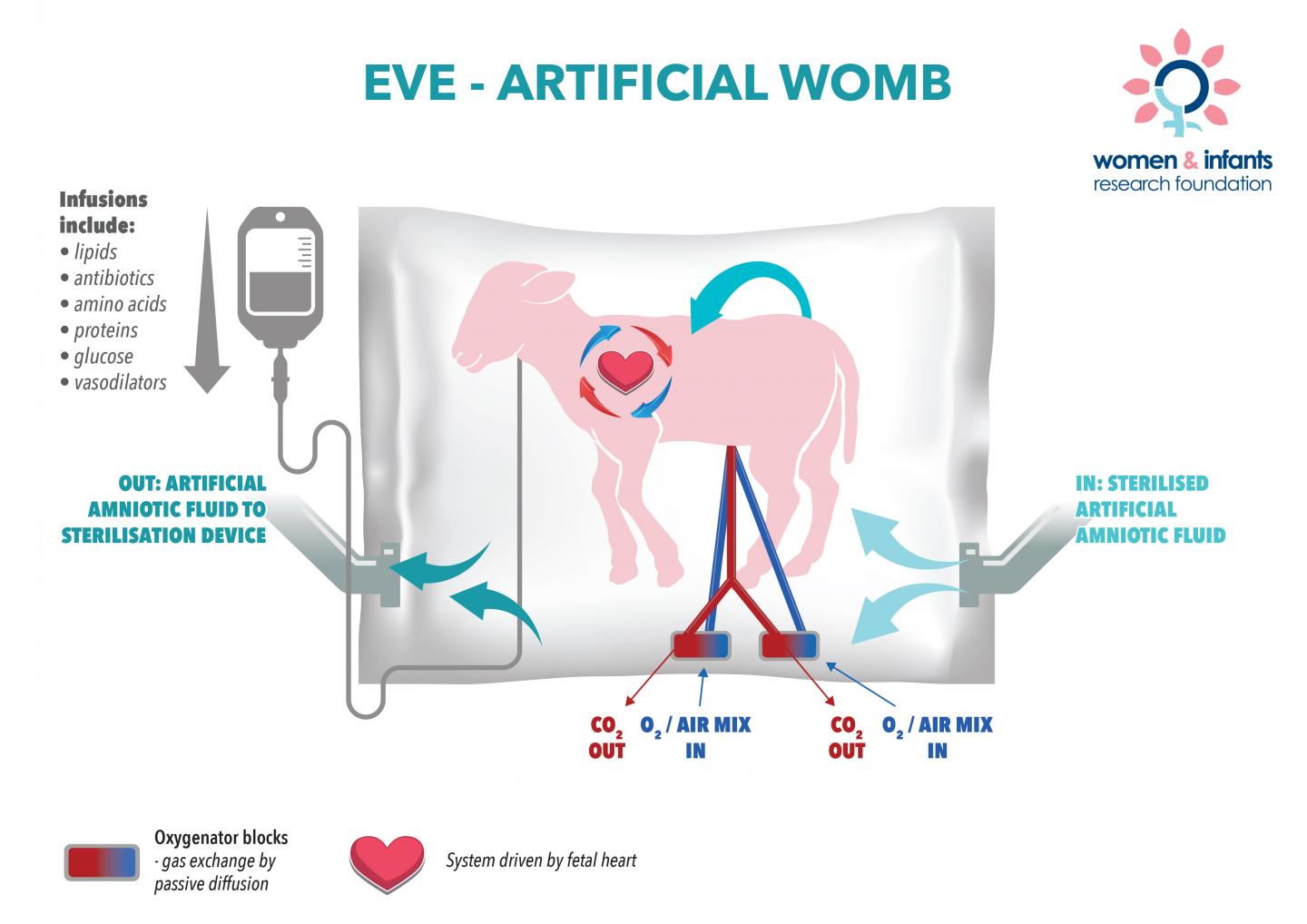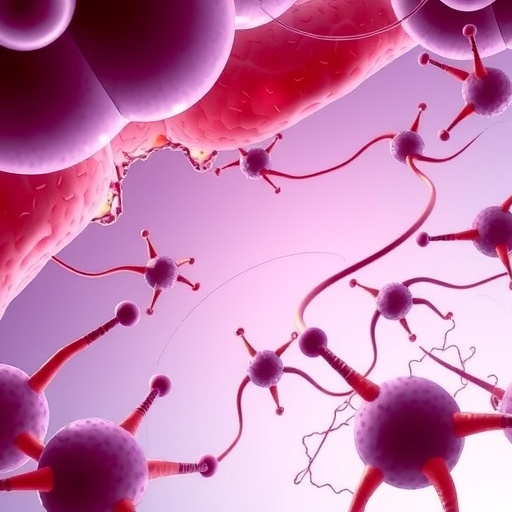
Credit: Women and Infants Research Foundation
An artificial womb has been successfully used to incubate healthy baby lambs for a period of one week, and researchers hope the technology will one day be able to do the same for extremely premature babies.
The long-standing collaborative Western Australian-based program, involving researchers from the Women and Infants Research Foundation, the University of Western Australia, and Tohoku University Hospital, Japan, has sought to develop an effective treatment strategy for extremely preterm infants born at the border of viability (22-23 weeks).
Findings published this week in the prestigious medical journal, The American Journal of Obstetrics & Gynecology, have shown that preterm lambs were successfully maintained in a healthy, infection-free condition with significant growth, for a period of one week using ex-vivo uterine environment (EVE) therapy.
Chief Investigator in Australia, Associate Professor Matt Kemp, said that with further development, EVE therapy could prevent the severe morbidity suffered by extremely premature infants by potentially offering a medical technology that does not currently exist.
"Designing treatment strategies for extremely preterm infants is a challenge," he said.
"At this gestational age the lungs are often too structurally and functionally under-developed for the baby to breathe easily."
The research team hypothesised that one means of improving outcomes for this group would be to treat them as a fetus rather than a small infant.
"At its core, our equipment is essentially is a high-tech amniotic fluid bath combined with an artificial placenta. Put those together, and with careful maintenance what you've got is an artificial womb," Assoc Prof Kemp said.
"By providing an alternative means of gas exchange for the fetus, we hoped to spare the extremely preterm cardiopulmonary system from ventilation-derived injury, and save the lives of those babies whose lungs are too immature to breathe properly. The end goal is to provide preterm babies the chance to better develop their lungs and other important organs before being brought into the world."
Assoc Prof Kemp said that as equally exciting as the research outcomes, was the collaborative element of the study. Perth-based researchers, including visiting Fellow Dr Haruo Usuda, work year-round with researchers from Tohoku University Hospital in Sendai (led by Associate Professor Masatoshi Saito and Dr Shimpei Watanabe) and the Artificial Placenta Development Team at Nipro Corporation in Osaka (led by Mr Shinichi Kawamura).
"This project is a wonderful example of international collaboration; it brings together leading academic researchers from Japan and Western Australia, and is undertaken in close partnership with one of Japan's foremost biomedical technology companies, Nipro Corporation" he said.
"Not only do we have some of the best minds in the field working on this much needed treatment, we also have a clear pathway for moving the results of our work beyond the laboratory and into clinical use.
"EVE therapy, and the use of sheep as a model of human pregnancy and the newborn, has been a long-standing research interest of this group. We now have a much better understanding of what works and what doesn't, and although significant development is required, a life support system based around EVE therapy may provide an avenue to improve outcomes for extremely preterm infants."
###
This work has been supported by grants from the Channel 7 Telethon Trust, the Department of Health, Government of Western Australia, and the Women and Infants Research Foundation.
Media contact:
Richie Hodgson
E-mail: [email protected]
Media Contact
Haruo Usuda
[email protected]
@TohokuUniPR
http://www.tohoku.ac.jp/en/
Original Source
http://www.tohoku.ac.jp/en/press/artificial_womb_raises_hope.html http://dx.doi.org/10.1016/j.ajog.2017.05.046





